Postgres Alter Column Type
When working with databases in PostgreSQL, there may come a time when you need to modify the data type of a column. This is where the ALTER COLUMN TYPE command comes in handy. It allows you to change the data type of a specific column in an existing table.
Syntax and Usage of ALTER COLUMN TYPE
The syntax for altering a column’s data type in PostgreSQL is as follows:
ALTER TABLE table_name
ALTER COLUMN column_name TYPE new_data_type;
In this syntax, “table_name” refers to the name of the table containing the column you want to modify, “column_name” is the name of the column you want to alter, and “new_data_type” is the desired data type you want to change the column to.
Modifying a Column’s Data Type Using ALTER COLUMN TYPE
To illustrate how to modify a column’s data type using the ALTER COLUMN TYPE command, let’s consider a scenario where you have a table called “employees” with a column named “age” of the data type “integer”. However, you want to change this data type to “text”.
To achieve this, you would execute the following query:
ALTER TABLE employees
ALTER COLUMN age TYPE text;
Once the query is executed, the “age” column in the “employees” table will be changed to the “text” data type.
Handling the Implications of Changing a Column’s Data Type
Changing the data type of a column can have implications on the existing data stored in that column. For instance, if you change a column from “integer” to “text”, any data in that column that is not numeric will remain intact. However, if there is any data that is purely numeric, it will not be able to be used in numeric operations until it is converted into text.
It’s important to consider these implications and ensure that you handle the necessary data conversions or validations after altering a column’s data type.
Specifying Constraints during ALTER COLUMN TYPE
When altering a column’s data type, you can also specify additional constraints. For example, you can add a NOT NULL constraint to ensure that the column does not contain null values:
ALTER TABLE employees
ALTER COLUMN age TYPE text
SET NOT NULL;
This query not only changes the data type of the “age” column to “text” but also adds a NOT NULL constraint to it.
Combining ALTER COLUMN TYPE with other ALTER COLUMN Actions
The ALTER COLUMN TYPE command can be combined with other ALTER COLUMN actions to perform multiple modifications to a column in a single query. For example, you can change the data type and rename a column simultaneously:
ALTER TABLE employees
ALTER COLUMN age
TYPE text,
RENAME TO new_age;
This query changes the data type of the “age” column to “text” and renames it to “new_age” in the “employees” table.
Performing Implicit Data Type Conversion with ALTER COLUMN TYPE
In some cases, PostgreSQL can perform an implicit data type conversion when altering a column’s data type. For example, if you have a column of the data type “integer” and you want to change it to “numeric”, you can execute the following query:
ALTER TABLE table_name
ALTER COLUMN column_name TYPE numeric;
PostgreSQL will automatically convert the existing data in the column to the new data type.
Practical Examples of ALTER COLUMN TYPE in PostgreSQL
Let’s take a look at a few practical examples of using the ALTER COLUMN TYPE command in PostgreSQL.
Example 1: Change a column’s data type to boolean
ALTER TABLE employees
ALTER COLUMN is_active TYPE boolean;
This query changes the data type of the “is_active” column to “boolean” in the “employees” table.
Example 2: Set a column to not allow NULL values
ALTER TABLE employees
ALTER COLUMN salary SET NOT NULL;
This query adds a NOT NULL constraint to the “salary” column in the “employees” table, ensuring that it does not contain any NULL values.
Example 3: Convert a column’s data type to integer
ALTER TABLE employees
ALTER COLUMN age TYPE integer
USING age::integer;
This query changes the data type of the “age” column to “integer” and performs an explicit data type conversion using the “USING” keyword.
Best Practices and Considerations when using ALTER COLUMN TYPE
– Always make a backup of your database before making any structural changes such as altering a column’s data type.
– Carefully consider the implications of changing a column’s data type and handle any necessary data conversions or validations.
– Test any changes in a development or staging environment before applying them to a production database.
– Take note of any constraints or dependencies that may be affected by altering a column’s data type, such as views, rules, or foreign key relationships.
– Document any schema modifications for future reference and ease of maintenance.
FAQs
Q: Can I delete a column using ALTER COLUMN TYPE?
A: No, the ALTER COLUMN TYPE command is specifically used for modifying a column’s data type. To delete a column, you would use the ALTER TABLE DROP COLUMN command.
Q: Can I change the data type of a column that is used by a view or rule?
A: No, you cannot alter the type of a column that is used by a view or rule. You would need to modify or drop the view or rule first before altering the column.
Q: How do I change a column’s data type to an integer in PostgreSQL?
A: To change a column’s data type to an integer, you can use the following query:
ALTER TABLE table_name
ALTER COLUMN column_name TYPE integer;
Q: Can I change a column to be nullable using ALTER COLUMN TYPE?
A: Yes, you can change a column to be nullable by removing the NOT NULL constraint. You can do this using the following query:
ALTER TABLE table_name
ALTER COLUMN column_name DROP NOT NULL;
Q: Can I change the data type of a column and rename it in a single query?
A: Yes, you can combine the ALTER COLUMN TYPE and RENAME TO actions in a single query to change the data type and rename the column simultaneously:
ALTER TABLE table_name
ALTER COLUMN column_name
TYPE new_data_type,
RENAME TO new_column_name;
Table Rename ,Column Rename And Change Data Type Column In Database Postgresql.
Can We Change The Datatype Of A Column In Postgres?
PostgreSQL, commonly known as Postgres, is a powerful open-source relational database management system. It provides a wide range of features and flexibility, making it a popular choice for many developers and organizations.
One important aspect of working with databases is the ability to modify the structure of tables and columns to match changing requirements. In this article, we will delve into the question of whether we can change the datatype of a column in Postgres and explore the various options and considerations involved.
Can we change the datatype of a column in Postgres?
The short answer is yes, it is possible to change the datatype of a column in Postgres. However, there are some caveats and limitations to be aware of.
The process of changing the datatype involves altering the table structure and accommodating the new datatype. Postgres provides several methods to achieve this, including using built-in functions, executing SQL queries, and utilizing third-party extensions.
Let’s take a closer look at some of the options available in Postgres.
Using built-in functions
Postgres offers a range of built-in functions that allow us to perform type conversion tasks. One such function is the “ALTER TABLE” statement, which enables us to modify the datatype of a column within an existing table.
For example, consider a table named “users” with a column named “age” currently defined as an integer datatype. To change it to a text datatype, we can execute the following SQL query:
“`
ALTER TABLE users ALTER COLUMN age TYPE text;
“`
It’s important to note that altering the datatype might require additional modifications to handle the data conversion. For instance, in the above example, integer values stored in the “age” column will be implicitly cast to text. If the data cannot be properly cast to the new datatype, an error will occur.
Executing SQL queries
Another way to change the datatype of a column in Postgres is by executing SQL queries. This approach provides more flexibility, as we have finer control over the conversion process.
Using the “CREATE TABLE AS” statement, we can create a new table with the desired datatype and copy the data from the original table. Here’s an example:
“`
CREATE TABLE new_users AS
SELECT name, age::text AS age
FROM users;
“`
In the above query, the “::” operator is used to cast the “age” column to the text datatype. We also select the “name” column from the original table to include it in the new table.
After creating the new table, we can rename it to the original table’s name and drop the old table:
“`
ALTER TABLE new_users RENAME TO users;
DROP TABLE IF EXISTS old_users;
“`
By executing these queries, we effectively change the datatype of the “age” column in the “users” table to text.
Utilizing third-party extensions
Postgres also offers a wide range of extensions that enhance the functionality of the database system. In some cases, these extensions provide specialized tools for handling datatype conversions.
One such extension is the “citext” extension, which provides a case-insensitive text datatype. If we wish to convert a column to a case-insensitive text type, we can enable the “citext” extension and modify the column’s datatype.
To enable the “citext” extension, execute the following query:
“`
CREATE EXTENSION IF NOT EXISTS citext;
“`
After enabling the extension, we can alter the datatype of a column to “citext” as follows:
“`
ALTER TABLE users ALTER COLUMN name TYPE citext;
“`
This approach is particularly useful when dealing with text data where case sensitivity is not desired.
FAQs:
Q: Can we change the datatype of a column containing data?
A: Yes, it is possible to change the datatype of a column that already contains data. However, depending on the type conversion involved, there may be potential data loss or errors during the conversion process. It is important to backup data before making any changes and carefully test the conversion to ensure data integrity.
Q: Are there any limitations or considerations for changing datatypes?
A: Yes, there are some limitations to be aware of when changing column datatypes in Postgres. Certain type conversions might not be possible due to incompatible datatypes or loss of precision. Additionally, changing the datatype can impact existing queries, views, and application logic that depend on the original datatype. It’s crucial to review and update any affected components when altering column datatypes.
Q: Can we change the datatype of a column with foreign key constraints?
A: Yes, it is possible to change the datatype of a column with foreign key constraints. However, the column’s datatype in the referencing table(s) must also be modified accordingly to maintain referential integrity. This involves updating the datatype in all the referencing tables and associated foreign key constraints.
In conclusion, changing the datatype of a column in Postgres is indeed possible. Whether by using built-in functions, executing SQL queries, or utilizing third-party extensions, Postgres offers various methods to accomplish this task. Nonetheless, it is vital to be cautious of potential data loss, errors, and considerations to ensure a smooth and successful conversion process.
How To Rename Column Type In Postgresql?
PostgreSQL is a powerful and versatile open-source relational database management system. It offers a wide range of features and flexibility that make it an excellent choice for developers and database administrators. One important task that often needs to be done in PostgreSQL is renaming column types. In this article, we will explore the various methods and best practices for achieving this.
1. Understanding the Basics of Column Types in PostgreSQL
Before we dive into the process of renaming column types, let’s briefly understand what column types are in PostgreSQL. Column types define the kind of data that can be stored in a particular column of a table. PostgreSQL provides a rich set of built-in and user-defined column types, such as integer, text, boolean, timestamp, etc.
2. Altering Column Types Using the ALTER TABLE Statement
The most common method to rename a column type in PostgreSQL is by using the ALTER TABLE statement. This statement allows us to modify the structure of an existing table. To rename a column type, we need to perform the following steps:
Step 1: Connect to the PostgreSQL database using an appropriate client tool or command-line tool.
Step 2: Identify the table and the column whose type you want to rename.
Step 3: Execute the ALTER TABLE statement with the appropriate parameters. For example, to rename the column type from “integer” to “text” for a table named “employees,” you can use the following statement:
“`
ALTER TABLE employees ALTER COLUMN column_name TYPE new_data_type;
“`
Make sure to replace “column_name” with the actual name of the column and “new_data_type” with the desired data type.
3. Rebuilding Column Types Using Temporary Tables
In some cases, altering column types directly might not be feasible due to constraints or dependencies. Alternatively, you can follow the approach of rebuilding column types using temporary tables. This method is useful when modifications need to be applied to large tables or when significant alterations are required.
Step 1: Create a temporary table that mirrors the structure of the original table while having the desired column type.
Step 2: Transfer the data from the original table to the temporary table.
Step 3: Rename the original table to a different name.
Step 4: Rename the temporary table to the original table’s name.
This process allows you to effectively change the column type without having to alter the table directly.
FAQs:
Q1. Can I rename the column type and also change its name simultaneously?
A1. Yes, you can rename both the column type and the column name in a single ALTER TABLE statement. Simply include the RENAME COLUMN parameter and specify both the old and new column names.
Q2. What are the considerations when altering column types?
A2. When altering column types, it is essential to ensure data compatibility. Changing column types might lead to data loss or conversion errors. Therefore, it’s crucial to analyze the existing data and assess the impact before proceeding with any modifications.
Q3. Are there any performance implications when altering column types?
A3. Depending on the size of the table and the extent of the change, altering column types can impact performance. It is recommended to perform these operations during off-peak hours or when the database load is minimal to minimize any potential performance impact.
Q4. Can I rename column types in multiple tables simultaneously?
A4. Yes, you can apply the ALTER TABLE statement to multiple tables by using the appropriate table names in the command. This allows for efficient and simultaneous renaming across multiple tables.
Q5. Is it possible to revert column type changes after they have been applied?
A5. While renaming column types is a non-destructive operation, reverting the changes after they have been applied can be complex. It is best to create a backup of the database before performing any alterations to provide the option of restoring the original state if necessary.
In conclusion, PostgreSQL offers several methods for renaming column types, providing flexibility and control for managing your database structures. Whether you choose to alter the column type directly or utilize temporary tables, it’s crucial to understand the potential impacts and follow best practices to ensure smooth and accurate modifications. By following the steps outlined in this article and considering the FAQs, you can confidently rename column types in PostgreSQL databases efficiently and effectively.
Keywords searched by users: postgres alter column type ALTER COLUMN postgres, Change column type postgresql boolean, ALTER COLUMN not NULL postgres, Delete column postgres, Cannot alter type of a column used by a view or rule, Postgresql change column type to integer, ALTER COLUMN NULLABLE postgres, ALTER TABLE change column type
Categories: Top 55 Postgres Alter Column Type
See more here: nhanvietluanvan.com
Alter Column Postgres
Postgres is a powerful and flexible open-source database management system that provides users with advanced features to manipulate and modify their data. One such feature is the ALTER COLUMN command, which allows users to alter the characteristics of a column in an existing table. In this article, we will explore the various uses and functionalities of ALTER COLUMN in Postgres, as well as answering some frequently asked questions.
What is ALTER COLUMN?
The ALTER COLUMN command in Postgres is used to modify the definition of a column in an existing table. It can change various attributes of a column, such as data type, length, default values, constraints, and more. ALTER COLUMN provides users with the flexibility to adapt the structure of their tables to suit their evolving requirements.
Syntax of ALTER COLUMN:
The syntax for ALTER COLUMN in Postgres is as follows:
“`
ALTER TABLE table_name
ALTER COLUMN column_name [SET DATA TYPE data_type]
“`
Here, `table_name` refers to the name of the table you want to alter, and `column_name` is the name of the column you wish to modify. The `SET DATA TYPE` clause is optional and is used to specify the new data type for the column.
Common Uses of ALTER COLUMN:
1. Changing the data type: One of the primary uses of ALTER COLUMN is to change the data type of a column. For example, if you have a column defined as `VARCHAR(50)` and want to change it to `INTEGER`, you can use the following command:
“`
ALTER TABLE table_name
ALTER COLUMN column_name SET DATA TYPE INTEGER;
“`
2. Modifying column constraints: ALTER COLUMN allows users to add, modify, or remove constraints on a column. For instance, if you want to add a `NOT NULL` constraint to a column, you can use the following command:
“`
ALTER TABLE table_name
ALTER COLUMN column_name SET NOT NULL;
“`
3. Adjusting column length: You can also use ALTER COLUMN to change the length or precision of a character or numeric column. For example, let’s say you have a column defined as `VARCHAR(100)` and want to reduce its length to `VARCHAR(50)`:
“`
ALTER TABLE table_name
ALTER COLUMN column_name TYPE VARCHAR(50);
“`
4. Setting default values: Another useful feature of ALTER COLUMN is the ability to set or modify default values for a column. If you want to set a default value of “N/A” for a given column, you can use the following command:
“`
ALTER TABLE table_name
ALTER COLUMN column_name SET DEFAULT ‘N/A’;
“`
Frequently Asked Questions:
Q1. Can I use ALTER COLUMN to rename a column?
No, ALTER COLUMN only modifies the attributes of a column; it does not rename it. To rename a column in Postgres, you need to use the RENAME COLUMN command. For example:
“`
ALTER TABLE table_name
RENAME COLUMN old_column_name TO new_column_name;
“`
Q2. Can ALTER COLUMN be used to change the position of a column in a table?
No, ALTER COLUMN does not provide an option to change the position of a column within a table. To change the position of a column, you need to recreate the table or use other commands like ADD COLUMN and DROP COLUMN.
Q3. What precautions should I take before altering a column?
Before using ALTER COLUMN, it is crucial to consider the potential impact on your data. Modifying a column may require existing data to be converted or revalidated, which can be time-consuming and resource-intensive. Therefore, it is recommended to take a backup of your table before performing any alterations.
Q4. Can ALTER COLUMN be used to modify column names, data types, and constraints simultaneously?
Yes, ALTER COLUMN allows you to modify multiple attributes simultaneously. You can include multiple clauses in a single ALTER COLUMN command to alter the name, data type, or constraints of a column.
In conclusion, ALTER COLUMN is a powerful command in Postgres that allows users to modify the characteristics of a column within an existing table. It provides flexibility and adaptability to meet changing data requirements. By understanding the syntax and common use cases, users can effectively leverage this command to manipulate their database structure in an efficient and controlled manner.
Change Column Type Postgresql Boolean
PostgreSQL, often referred to as Postgres, is a powerful, open-source relational database management system (RDBMS) used by developers and organizations worldwide. It provides a wide range of data types, including the Boolean data type, which allows for storing true/false values. But what if you need to modify the column type from Boolean to something else or vice versa? In this article, we will explore various aspects of changing the column type from Boolean in PostgreSQL and provide a comprehensive guide to help you through the process.
Understanding Boolean in PostgreSQL:
The Boolean data type in PostgreSQL represents a logical truth value, either true or false. It is commonly used to store binary data, yes/no choices, or Boolean expressions. A Boolean column in a table can be defined as follows:
“`sql
CREATE TABLE my_table (
my_column BOOLEAN
);
“`
Changing Column Type from Boolean in PostgreSQL:
To change the column type of an existing Boolean column in PostgreSQL, the process includes a few steps. Let’s dive into each of them in detail:
1. Create a new column: The first step involves creating a new column of the desired data type. This can be achieved using the ALTER TABLE statement:
“`sql
ALTER TABLE my_table ADD COLUMN new_column new_data_type;
“`
Replace `my_table` with the name of your table, `new_column` with the name of your new column, and `new_data_type` with the desired data type.
2. Update the new column: After adding the new column, you need to update its values based on the values in the Boolean column. The UPDATE statement can be used to accomplish this task:
“`sql
UPDATE my_table SET new_column = (my_column = true);
“`
By comparing the Boolean column to true, we assign the corresponding boolean value to the new column. In this case, if the value in `my_column` is true, the new column will also be set as true.
3. Drop the Boolean column: Once the values have been transferred to the new column, you can drop the original Boolean column:
“`sql
ALTER TABLE my_table DROP COLUMN my_column;
“`
Make sure to double-check the column name to avoid any accidental deletes.
4. Rename the new column (optional): If necessary, you can rename the new column using the ALTER TABLE statement:
“`sql
ALTER TABLE my_table RENAME COLUMN new_column TO renamed_column;
“`
This optional step allows you to give a more appropriate name to the updated column.
Frequently Asked Questions (FAQs):
Q1. Will changing the column type impact existing data?
A1. Yes, changing the column type will modify the data held in the column. Ensure you have a backup of the data before making any changes.
Q2. Can I change the column type of a column with constraints?
A2. Changing the column type of a column with constraints can be complex. It is recommended to remove or disable the constraints before attempting any changes.
Q3. Can I change the Boolean data type to other data types?
A3. Yes, PostgreSQL offers various data types, such as integer, text, or timestamp. You can change the Boolean data type to any appropriate data type based on your requirements.
Q4. What if the Boolean column contains NULL values?
A4. If the Boolean column contains NULL values, you can choose to handle them in different ways. You may set a default value for the new column or handle NULL values through conditional statements in the UPDATE query.
Q5. Can I change the column type back to Boolean?
A5. Yes, you can change the column type back to Boolean by following a similar process outlined earlier. Ensure you have a backup of the data before making any changes.
Q6. Are there any alternatives to changing the column type?
A6. In some cases, it might be more efficient to create a new table with the desired column type, copy the data from the original table, and make the necessary adjustments. This approach can provide more flexibility, especially if you need to preserve the original data as it is.
Conclusion:
Changing the column type from Boolean in PostgreSQL requires careful planning and execution. By following the steps outlined in this comprehensive guide, you can successfully modify the column type and ensure data integrity. Always make sure to back up your data before making any changes, and consider alternative approaches if necessary. PostgreSQL flexibility, combined with a deep understanding of column type changes, can simplify database management and cater to evolving business needs.
Alter Column Not Null Postgres
When working with databases, there are times when you need to modify the structure of your tables. One common operation is altering a column to make it not null. In PostgreSQL, the ALTER COLUMN NOT NULL command allows you to enforce the requirement of having non-null values on that column. This article will delve into the details of using ALTER COLUMN NOT NULL in PostgreSQL, its syntax and usage, as well as some frequently asked questions.
Syntax:
The ALTER COLUMN NOT NULL command in PostgreSQL follows a straightforward syntax. Here’s the general structure:
“`
ALTER TABLE table_name ALTER COLUMN column_name SET NOT NULL;
“`
The `ALTER TABLE` keyword is used to specify the table you want to modify. Following that, you add the `ALTER COLUMN` keyword, which indicates the operation you want to perform on a specific column. Finally, you specify the column name you want to alter and set the constraint `SET NOT NULL` to enforce the non-null requirement.
Usage:
Let’s go over a couple of scenarios where you might need to use ALTER COLUMN NOT NULL in PostgreSQL.
1. Modifying an existing column:
Suppose you have a table named “employees” with a column called “email” that currently allows null values. However, for your application requirements, you need to ensure that every employee record has a valid email address. To achieve this, you can use the ALTER COLUMN NOT NULL command as follows:
“`
ALTER TABLE employees ALTER COLUMN email SET NOT NULL;
“`
By executing this statement, you alter the “email” column in the “employees” table, making it not null. From now on, every record inserted or updated in the table must contain a non-null value for the “email” column.
2. Adding a new column:
Another scenario where ALTER COLUMN NOT NULL is useful is when adding a new column to an existing table. Suppose you have a table named “orders” that already contains data, but you need to add a column called “order_date” to track the date each order was placed. You want to ensure that all new orders have a non-null value for the “order_date” column. To achieve this, you can execute the following command:
“`
ALTER TABLE orders ADD COLUMN order_date DATE NOT NULL DEFAULT CURRENT_DATE;
“`
In this example, the `ADD COLUMN` clause adds a new column named “order_date” to the “orders” table with the specified data type `DATE`, and the `NOT NULL` constraint is set to enforce non-null values. Additionally, the `DEFAULT CURRENT_DATE` clause sets today’s date as the default value for the “order_date” column.
FAQs:
Q: Can I use ALTER COLUMN NOT NULL with multiple columns at once?
A: No, ALTER COLUMN NOT NULL can only be applied to one column at a time. To modify multiple columns, you need to execute separate ALTER COLUMN NOT NULL statements for each column.
Q: What happens if a table already contains null values in the column I want to alter?
A: If a table already contains null values in the column you want to alter, executing ALTER COLUMN NOT NULL will result in an error. PostgreSQL won’t allow the alteration since it would violate the non-null constraint. You first need to update or delete the null values before applying the alteration.
Q: Is it possible to remove the NOT NULL constraint from a column?
A: Yes, you can reverse the operation by using the ALTER COLUMN NULL command instead. This will allow null values in the column. However, be cautious when removing the constraint, as it may introduce inconsistencies if the column was previously expected to be non-null.
Q: Can I alter a column’s data type along with setting it to NOT NULL?
A: Yes, you can modify both the nullability and the data type of a column in a single ALTER COLUMN NOT NULL statement. However, be aware that changing the data type of a column may require data conversion or transformation, which could lead to data loss or unexpected results.
In conclusion, the ALTER COLUMN NOT NULL command in PostgreSQL provides a powerful way to enforce non-null values on a column. Whether you need to modify an existing column or add a new one, this command allows you to define stricter constraints on your data. Remember to handle any existing null values appropriately, as they can cause alteration errors. By utilizing ALTER COLUMN NOT NULL effectively, you can enhance the integrity and reliability of your database schema.
Images related to the topic postgres alter column type

Found 46 images related to postgres alter column type theme

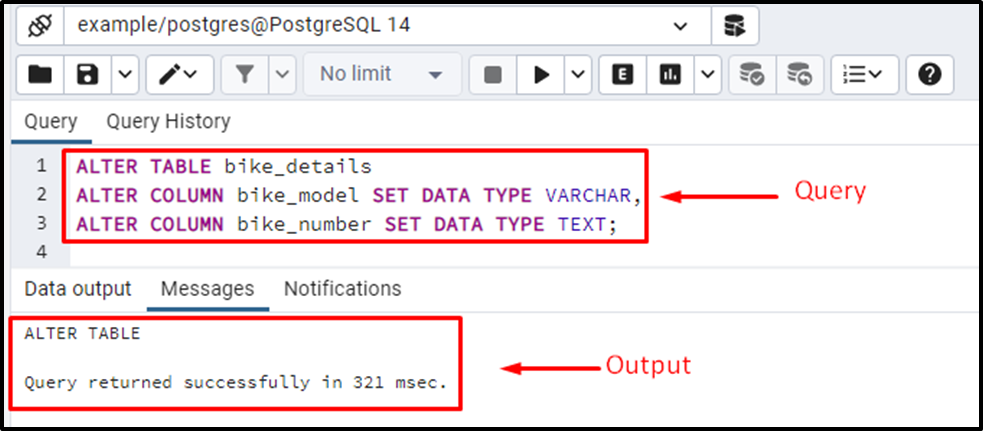
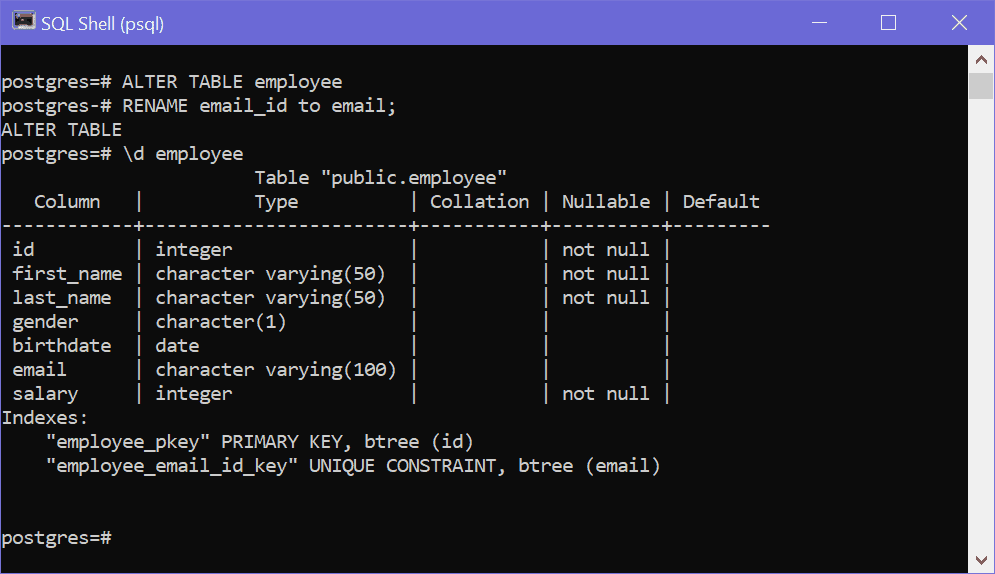


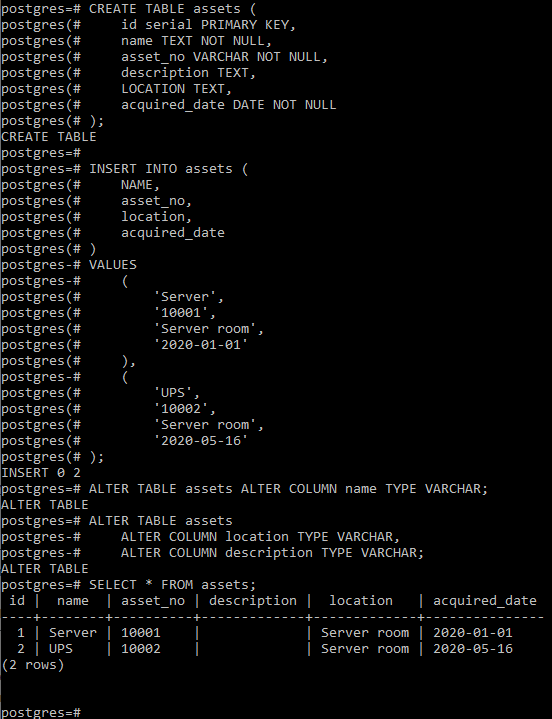
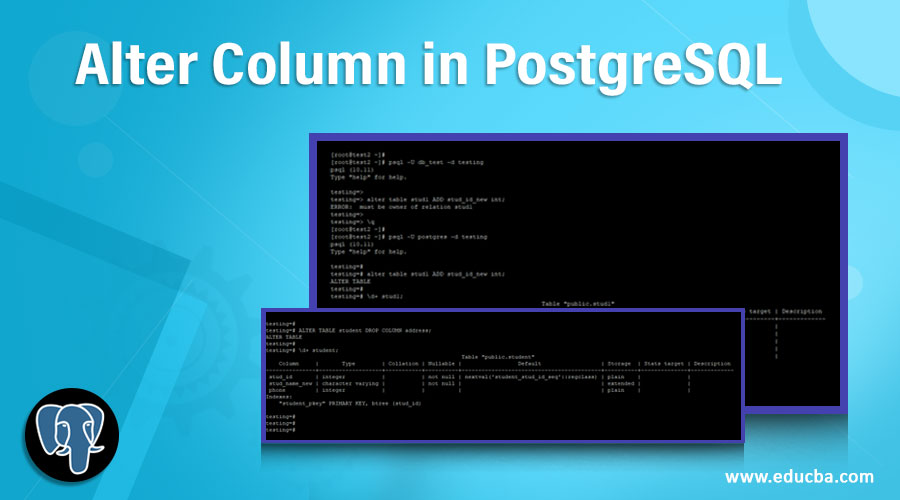



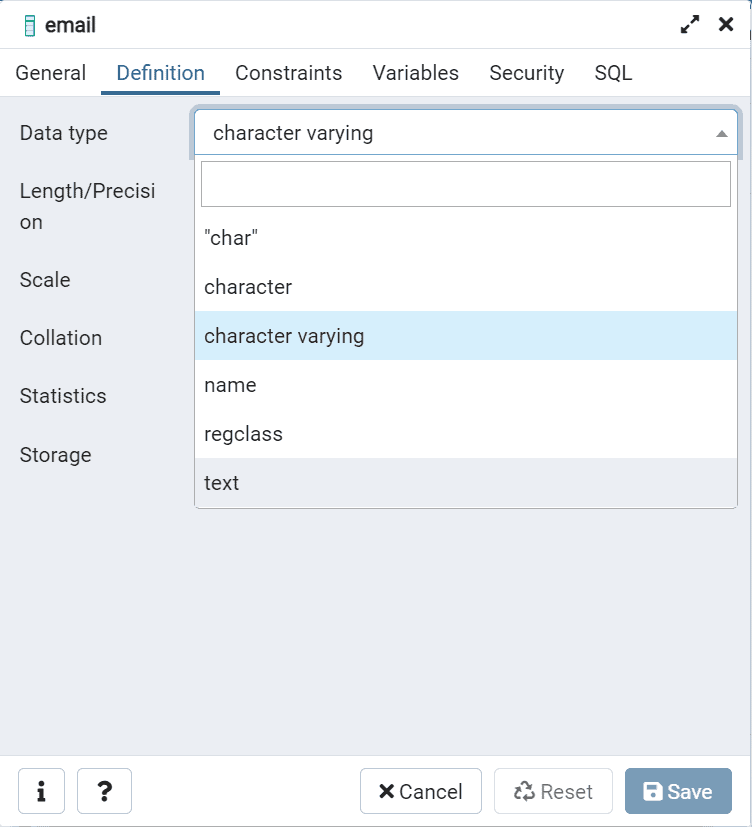
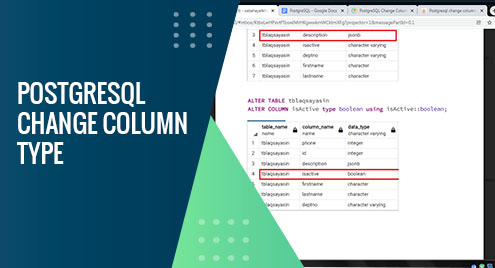
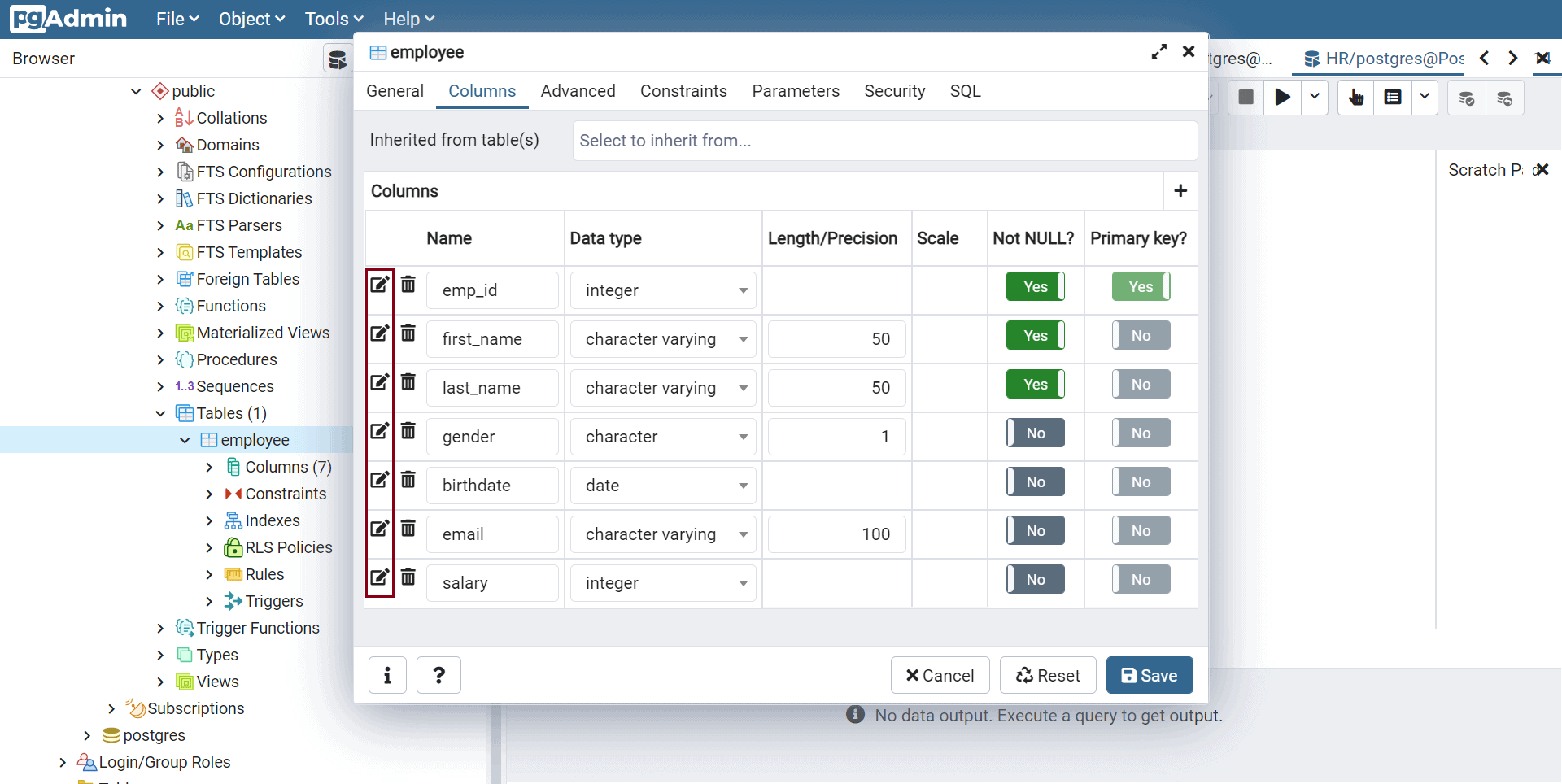





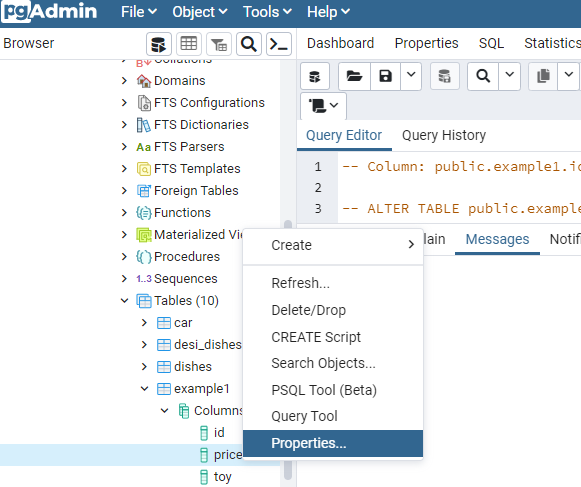

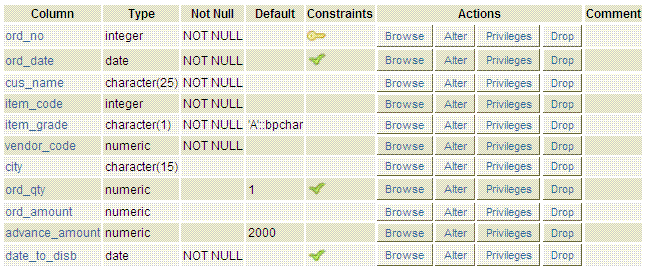

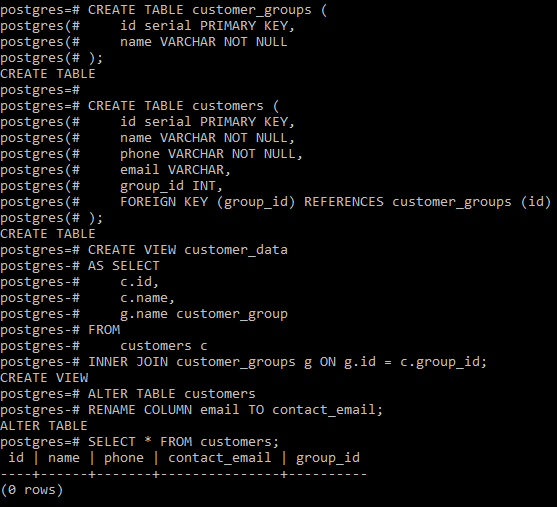

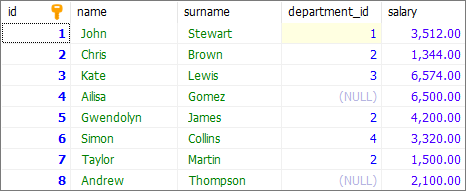


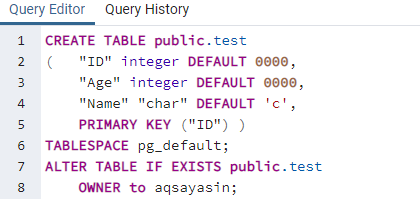
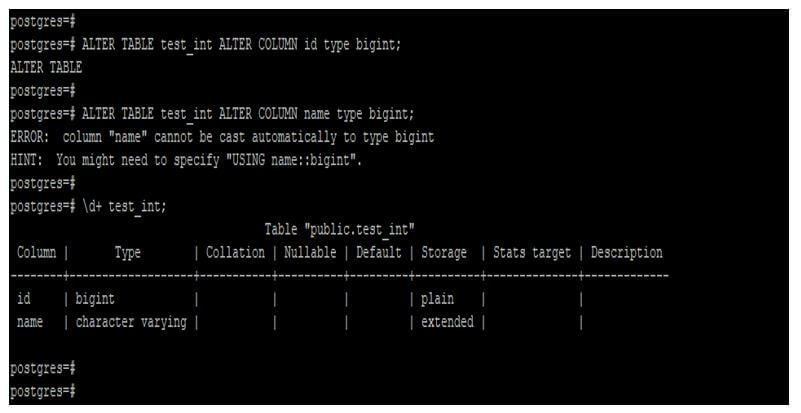
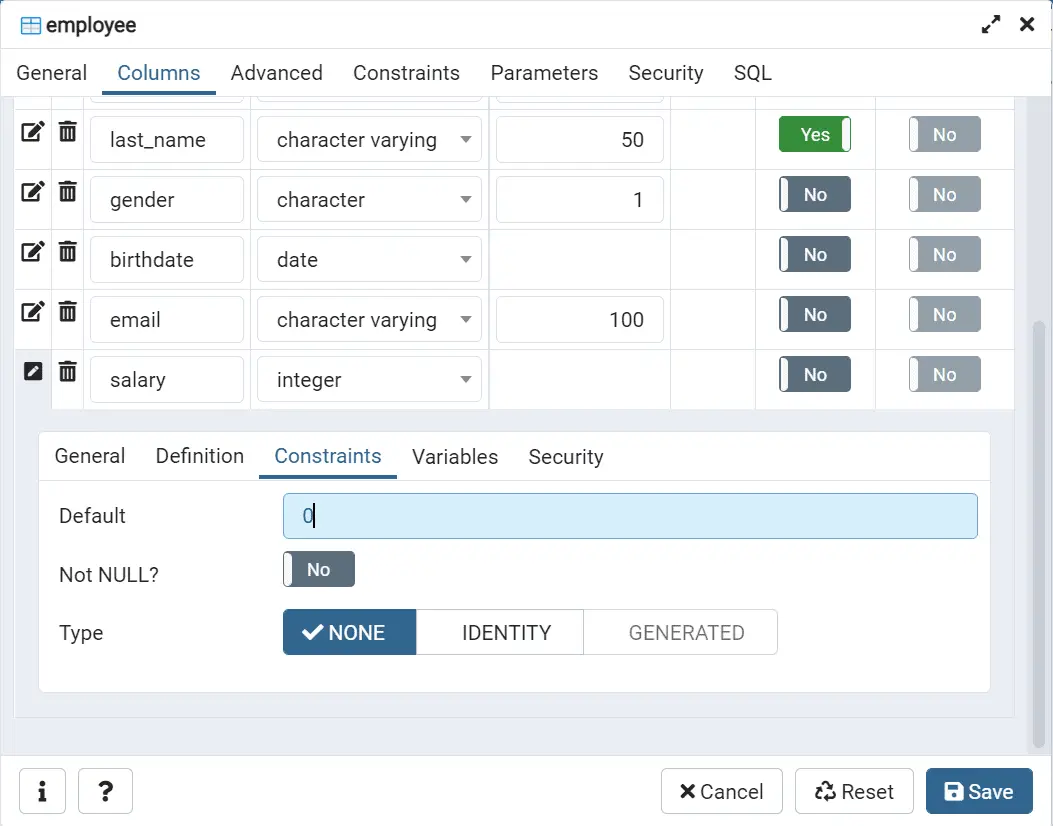



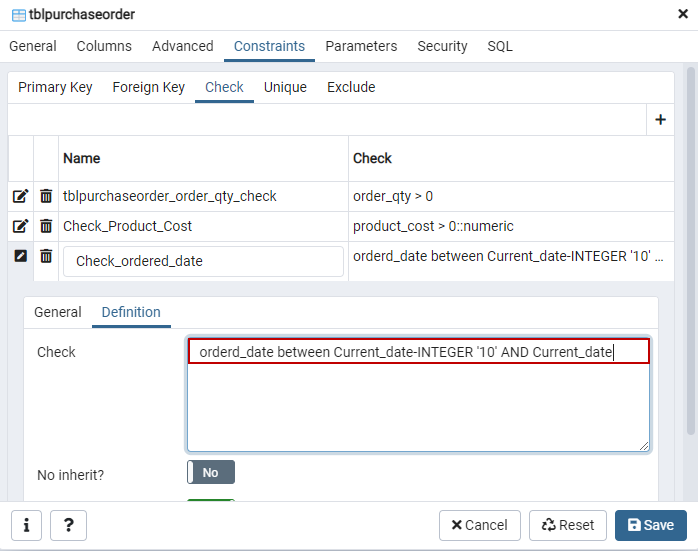








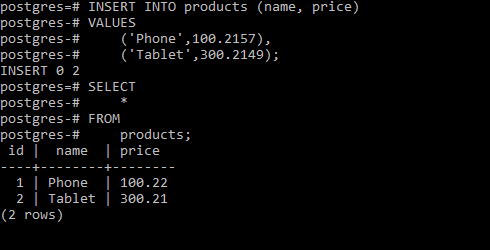







Article link: postgres alter column type.
Learn more about the topic postgres alter column type.
- PostgreSQL Change Column Type: Step-by-Step Examples
- How to alter a column’s data type in a PostgreSQL table?
- Modify Column Type in PostgreSQL – TutorialsTeacher
- PostgreSQL – Change Column Type – GeeksforGeeks
- How to Change/Modify Column Type in PostgreSQL
- PostgreSQL – RENAME COLUMN – GeeksforGeeks
- Documentation: 15: 5.6. Modifying Tables – PostgreSQL
- How do you change the datatype of a column in SQL Server?
- PostgreSQL – Change The Type Of A Column, A Walkthrough …
- PostgreSQL Change Column Type – Javatpoint
See more: nhanvietluanvan.com/luat-hoc